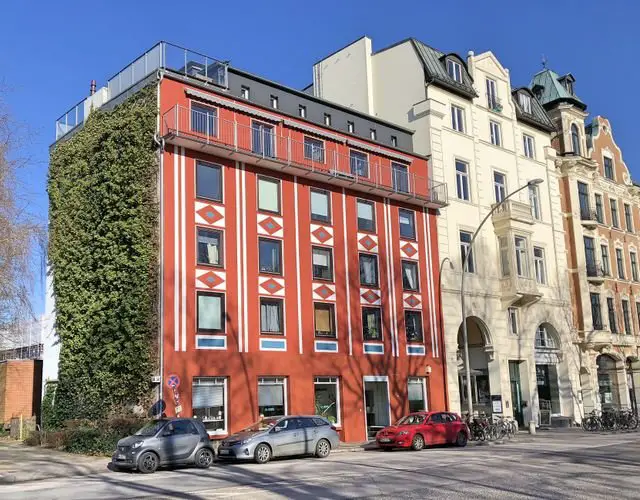Altona Königstraße: The Sephardic Sepulchral Culture of the 17th-18th century was a fusion between the Jewish burying tradition and the burial culture of the peoples at the locations where the Sephardic Jews resettled. This time was characterized by a massive relocation of Sephardim from the Iberian Peninsula, primarily Spain and Portugal, to various European countries and the Caribbean.
Sephardim, originally from the Iberian Peninsula faced persecution and expulsion by the Spanish Inquisition authorities. Most of them moved to the Netherlands, England, and Southwest Germany due to their religious tolerance and economic wdbos prosperity . They brought not only their traditional practices with them but a unique understand of burial and remembrance.

The migration of Sephardic Jews to Europe and the Caribbean
The Sephardic migration to Europe and the Caribbean was primarily motivated by religious presecution but they enjoyed many new opportunities in different regions as well as sought to preserve their culture and religion. The Sephardim created new significant centers of culture and business in both Europe and Caribbeanwhen they settled, and the new communities blossomed. In Europe, for example, the Sephardim became the critical players in major centers such as Amsterdam, London, Hamburg, and others. They were at the forefront of trade and finance bringing experience and networks with them. In the Caribbean, they established new settlements in Curacao,Suriname, Jamaica, and other places where that new middle clas played a role in the sugar and slavery trade.
Significance of the Jewish Cemetery of Altona Königstraße in preserving Sephardic culture
The Jewish Cemetery of Altona Königstraße in Hamburg, Germany, is important, as it provides a rich source of the Sephardic Sepulchral Culture of the 17th and 18th century. Indeed, this cemetery represents the place where dead Sephardic Jews of Altona buried their relatives. Altona was a municipal trading place that attracted traders from all over the world.
Therefore, the cemetery reflects not only the burial beliefs and traditions of Sephardic Jews but also the cultural exchange between them and other lands they lived in. Thus, the tombstone art, art history, epitaphs, and inscriptions reveal one of the most complete and informative sources for research Sephardic Jews and their influence.
Architecture and layout of the cemetery
One of the aspects of the Jewish Cemetery of Altona Königstraße that was determined by the characteristics of the Sephardic Sepulchral Culture of the time is its layout. The cemetery comprises specialized sections that trace the history of the Sephardic Jewish community throughout various periods . Each part is dedicated to a particular century or community, which inhabited the area at different periods.
The tombstones and mausoleums in the cemetery are designed in a very sophisticated manner, combining elements of Jewish and local architecture. Furthermore, the layout of the cemetery reflected the hierarchical organization of the Sephardic Jewish community. Notable families or community advocates were often buried in the central parts of prominent status, while less affluent individuals lay further from the center.
Symbolism and rituals in Sephardic burial practices
Moreover, Sephardic burial practices are characterized by various symbols and rituals referring to the religious and cultural aspects of the community. Jews Cemetery of Altona Königstraße is also rich in such symbols and inscriptions used on the tombstones. For instance, levaya indicates the representation of the soul lifted to heaven. It emphasizes the afterlife idea and the path the soul will follow after death . The second example is the priestly blessing hands or the Star of David and the menorah.
hese and several others indicate some symbols of Jewish identity and reflect the deceased’s connection to Judaism . Sephardic burials also had their specific rituals and prayers to be said during the funeral and mourning period, which also helped the honoring of the calmness of the spirit of the dead.

Notable individuals buried at the Jewish Cemetery of Altona Königstraße
Each decorated grave at the Jewish Cemetery of Altona Königstraße houses the remains of a person who left a significant legacy in the Sephardic Jewish community, which perhaps marks their final resting place. Abraham de Pinto earned a spot in the list of the Sephardic Jewish leaders through his conspicuous influence on the trade connection between Europe and the Caribbean. His tombstone shows inscriptions referring to his deeds and his involvement in defending the Sephardic community.
Preservation efforts and challenges faced by the cemetery
Maintaining the integrity of the Jewish Cemetery of Altona Königstraße is necessary for preserving the connections to and proper knowledge of Sephardic Sepulchral Culture . Over the years, the cemetery has been subject to various threats such as people’s neglect or disturbance, vandalism, and trespassing caused by urban development. However, people have been motivated to put effort in the restoration and regular upkeep of the burial grounds. This work is done by meaningful organizations and funded by public awareness campaigns and supporters who are concerned about values, identity, or history.
Cultural and historical importance of the cemetery in modern times
Overall, the Jewish Cemetery of Altona Königstraße is an invaluable historical and cultural concept in the present day. The site bears a tactile connection to the Sephardic Sepulchral Culture, made the way to a Sephardic Jew in the 17th-18th centuries. It provides insight into the multiple connections and impacts made by the Sephardic Jews in several countries of Europe and the Caribbean . At the same time, the Jewish cemetery is a constant reminder of their lives and contributions, situated in the larger historical and social framework.

Conclusion: The enduring legacy of Sephardic Sepulchral Culture at the Jewish Cemetery of Altona Königstraße
Moreover, the Jewish Cemetery of Altona Königstraße is much more than a cemetery – it is a living monument to the Sephardic Sepulchral Culture of the 17 th and the 18 th century. Therefore, this place should be of great interest to people since it has an immense historical, cultural, and scientific value. The visit to the Jewish Cemetery of Altona-Königstraße provides an incredible opportunity to understand better the experience of Sephardic Jews, who passed from migration to traditions and from traditions to contacts.
The cemetery is a meaningful testament to historical Sephardic Sepulchral Culture and to the vibrant life and flourishing Jewish community that were in Altona. It brings us near the past and reestablishes the connection between present and past. If you found this exploration of Sephardic history compelling, we invite you to delve further into our article on the Smoking Ban, another topic where societal values and historical context intersect.





